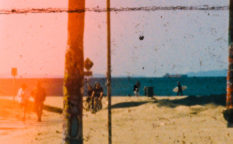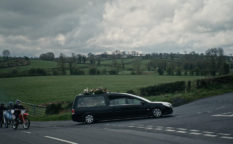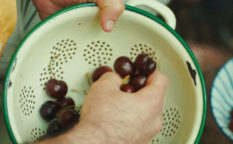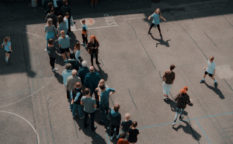Open call: “sandleiten fully wired”/ soho in ottakring festival 2014 (wien)
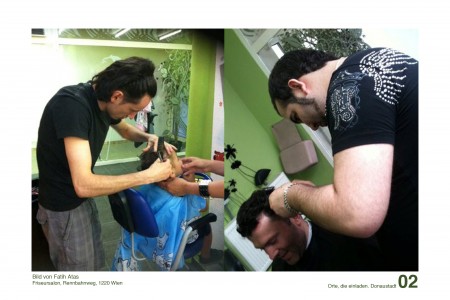
Deadline: September 30th 2013
Open call for projects and workshops in all artistic media:
Sandleiten fully wired | Sandleiten aufdraht
We are inviting artists, cultural workers and architects, as well as other individuals and collectives, to join the art project and festival Soho in Ottakring, May 17 – May 31/2014 in Vienna, Austria.
Contents:
1. Short description Soho in Ottakring
2. Festival topic: Sandleiten High Wire / Sandleiten unter Strom
3. Geographical and social setting of Sandleiten
4. What Soho in Ottakring has to offer
5. Guidelines for applicants and contact information
Soho In Ottakring is an association that started 1999 as an artists’ initiative to realize art and projects in the urban area of Ottakring, Vienna´s 16th district. Soho in Ottakring focuses on aspects such as artistic intervention and interaction in the local environment, urban living and development and public life. Soho is a flexible institution collaborating with national and international artists, cultural workers, local individuals, groups and other institutions. The variable fields of interest in ethnically mixed areas create the grounds for artistic work. Socially and politically engaged projects, which concentrate on specific implications of the neighborhood as prototypical issues concerning society, are especially encouraged. A key aspect is the pro-active use of public space during the biennial two-week festival in May.
The Festival topic: Sandleiten fully wired | Sandleiten aufdraht
Soho in Ottakring is looking for artistic and interdisciplinary projects that have a main focus on workshops and handcraft of all kind. The Soho in Ottakring festival 2014 should motivate to open the senses, get in touch, be active, and to look behind the obvious in the Viennese area called ’Sandleiten’ (see below for more about Sandleiten).
The festival should also give an impulse to create common public interest for new ways of expression with techniques developed and offered in the workshops. We see it as an opportunity to find hidden physical and emotional places and bring them into sight and create new situations. It should also invite to raise curiosity playfully, to gain knowledge from and about individuals and to interact.
Proposals for pop up workshops/handcraft and informal meeting places are very welcome. They can be about communication, consumerism, mobility, space, waste, but also about very different topics. It might also be possible to collaborate with the local (work)shops: a cafe, 2 bakeries, 2 small grocery stores, drug store, patisserie, coiffeur, shirt maker.
Primary aim should be to reach out to residents in the area such as (multilingual) adults, youth of different age, elderly (who might have knowledge of old handcraft).
Depending on the proposed project, workshops can either take place in one of the vacant spaces, at venues that have a diverse public use such as the shopping area or which are being used by specific groups (for example ’Club of the Retired’).
Approaches may vary, but one of the aims should be to get in touch with people and to involve them in the workshops, to find residents and other persons with specific knowledge and abilities of handcrafts or interest in trying and learning. An aim will also be to create a dialogue on the local habitat. Some of the elderly residents have been living at the same spot since early childhood.
All projects and workshops should comprise a presentation phase during the festival, which makes their outcomes visible and discussible.
Sandleiten: Geographical and social setting
Sandleiten is a suburban area located on the northwestern edge of Ottakring, the 16th district of Vienna, a 17 minute tram ride from the city center. Ottakring was suburbanized in the year 1892, at which time it was characterized as a working class district. Typical features of the Sandleiten area today are: A lack of public life, little interest in developing the community and a growing mistrust between the old and young inhabitants, which often means between native Austrians and immigrants.
In Austria, even today, the idea of the ethnic homogenic society is still prevailing, which in turn is connected with hegemonial power relations and the privileges that go along with it. It is a historic fact, though, that social and cultural phenomena, which might be perceived as homogenous, have shaped through hybridity[1]. At the same time minds and bodies are inscribed with capitalist competitiveness – either you are part of this system of productivity or you fall out of it and feel useless.
All those influences shaping society are manifest on the local level as well.
In Vienna, around 500.000 inhabitants (1/4 of the Viennese population) live in apartments of municipal housing. Public space in these housing complexes is semi-private. Traditionally they are often planned as generous green square courtyards surrounded by apartment buildings (the so called „Hofform“). At „Sandleitenhof“, the composition of the architecture is partly strictly geometrical, partly fluid and lyrical.
In the past years, the predominantly social democratic municipality of Vienna set actions for more security, order, silence and discipline in the municipal housing complexes, to calm conflicts among residents due to the 2006 opening of municipal housing to immigrants[2]. But these actions are also controversial: critics remark that they often even deepen social isolation.
Proposed areas for the festival are as follows:
– “Sandleitenhof“, a unique and impressive municipal housing complex built 1924-1928 – the largest of „Red Vienna“ – planned as a city within the city. More than 4.000 residents live in 1.587 apartments (with some empty spaces).
– „Adolf Schärf Hof“, a communal housing complex built 1981-1983, neighbor to Sandleitenhof (some empty spaces as well).
– Private houses and streets in the area.
– „Kongress Park“, established 1927-1929, with playgrounds and a former Milk Hall (an open polygonal pavilion with a cone roof), an open grass field, old trees and paths among bushes and flower beds.
– „Kongress Pool“, a public swimming pool built 1928 – a symbol for social democratic worker´s culture.
– Local shopping area: Supermarket „Interspar“ (3400 sqm, built 2002) and small shops.
– „Sport and Fun Hall“: a multi-functional sports hall for hobby and professional training, 2.800sqm, built 2009.
– Local church, built 1935/36.
– Two kindergardens.
– Public library located on the premises of „Sandleitenhof“.
What Soho in Ottakring has to offer
Curatorial advice for the artistic endeavours.
– Embedding in the overall concept of the festival.
– Support for artistic work of all media and interdisciplinary projects.
– Connecting with artists, inhabitants, shop owners and local initatives.
– Advice and support for finding spaces (storefront, public space, shop, etc.).
– Usage of the Soho infrastructure for the preparation phase, meetings, presentations, etc..
– Support for (municipal) permissions.
– Event and education program for residents and visitors.
– Folder, flyer, program, poster production and distribution in Vienna.
– Promotion on the highly frequented Soho in Ottakring website: http://www.sohoinottakring.at/.
– Press work and PR for all projects.
Financial support for the projects:
Due to limited public funding, our festival budget allows us to offer a maximum of € 5.000 only to a small number of projects. Lower budget, less extensive projects are also welcome! A small fee, costs for travel and realization of the project will be covered by organisers.
Special offer:
To those interested in the application, the Soho in Ottakring team offers tours in the Sandleiten area on the following dates: September 5th, 12th, 19th, and 26th as well as October 10th/2013 at 6 p.m.
Meeting point: Café Tina, Matteotti Square at „Sandleitenhof” in Ottakring, close to tram 44, station “Liebknechtgasse”.
After each tour there will be an offer of public “Working Conversations” in German, with experts on and from the area enlightening historical and contemporary aspects of social and public life.
International applicants are invited to contact us for additional visits, when they are in town.
Guidelines for applicants and contact information
Applicants should send:
– Proposal of max. two A4 pages explaining the project with basic ideas. Illustrations, sketches or diagrams may be added.- Time line and description of implementation.
– Short CV of applicant/s (700 characters max.) with contact person, websites.
– Estimation of costs for the realization. Possible (realistic) co-funding.
Realization of all actions should be done between March and May 2014, depending on the research and preparation phase. The workshops will take place during the festival 2014.
Deadline of the call is September 30/ 2013 (postal stamp).
Please send your submission (English or German) only via snail mail to:
Verein Soho in Ottakring
Brunnengasse 68/9
A-1160 Vienna
Austria Europe
Proposals will be selected by an interdisciplinary and independent jury, their names will be published on the Soho website.
Applicants will be informed by November 15/ 2013 at the latest.
Contact/Information:
For questions concerning the application please contact: contact@sohoinottakring.at
[1] Erol Yildiz: From Hegemony to Diversity – A New View on Migrant Society, 2009
[2] ..residing in Vienna at minimum of 6 years without need of Austrian citizenship

